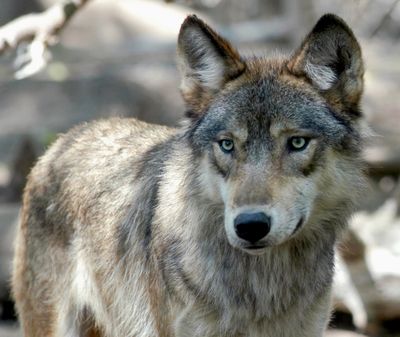Montana wolf hunt criticized by Yellowstone Park superintendent

BILLINGS – The most-viewed wolf pack in the world lost three of its members to Montana hunters during the first week of the hunting season in September, Yellowstone National Park announced.
“These wolves are part of our balanced ecosystem here and represent one of the special parts of the park that draw visitors from around the globe,” park superintendent Cam Sholly said in a Monday news release.
The state of Montana and park service often steer clear of publicly disagreeing, but Sholly went on record Monday advocating for greater protection of the park’s wolves saying they were “extremely vulnerable” under the state’s newly enacted hunting regulations.
“We will continue to work with the state of Montana to make the case for reinstating quotas that would protect the core wolf population in Yellowstone as well as Montana’s direct economic interests derived from the hundreds of millions spent by park visitors each year,” he said.
Last year, the Department of Interior estimated 5.5 million Yellowstone and Glacier national park visitors supported 9,620 jobs in Montana, contributing $306 million in labor income.
Montana’s GOP-dominated Legislature loosened regulations on many wildlife species in the state this spring, including wolves. The legislation approved snaring and a longer hunting season, as well as baiting and night hunting at the discretion of the Montana Fish and Wildlife Commission. Lawmakers cited reduced elk and deer populations in northwestern Montana for the changes.
The commission also approved removing quotas that had been in place for more than eight years in hunting districts 313 and 316 next to the park, which most recently had limited the seasonal take to one wolf.
“Over 33% of the boundary Yellowstone shares with Montana is within one mile of private property where baiting is now permissible,” the park statement said.
Montana’s changes have drawn rebukes from state and national conservation groups and prompted the U.S. Fish and Wildlife Service to announce it would review state management of wolves in the lower 48 states, including Montana and Idaho. That isn’t enough action for some, though.
“Wolves in Idaho and Montana are under attack right now,” Kitty Block, president and CEO of the Humane Society of the United States, said in a news release. “Wolves simply cannot afford to suffer through months of wanton slaughter while the USFWS completes its review.”
Last week, the group announced it is petitioning the USFWS to immediately restore endangered species protections to wolves in the region on an emergency basis.
In a more sweeping move, several other groups – including 25 Native American organizations – have called for state game agencies to lose federal funding if they “excessively target predators such as wolves, cougars and grizzly bears.”
On the opposite side of the issue, last year a nonprofit group and Park County outfitter filed a lawsuit against the state and Fish and Wildlife Commission challenging the reduced wolf quotas next to Yellowstone. The lawsuit claimed the quotas served “no legitimate purpose” other than to appease wolf supporters.
The Yellowstone wolves killed were members of the Junction Butte pack, comprised of 27 animals, the park said. The pack roams the park’s Northern Range, which borders Montana and the communities of Gardiner and Cooke City. Killed were two female pups and one female yearling, park officials said.
Wolves occupying the region “spend an estimated 5% of the time outside the park, usually in late fall,” the park said. “Ninety-eight percent of wolves in Montana are outside units 313 and 316.”
Previous killings of well-known wolves by hunters have drawn outrage from wolf watchers, some of whom drive hours from out of state in hopes of seeing one of the large canids or their pups.
The Junction Butte Pack formed in 2012 in the northern section of the park. They are the most observed pack in Yellowstone because they den within view of the Northeast Entrance Road and the road to Slough Creek Campground, providing thousands of visitors daily views.